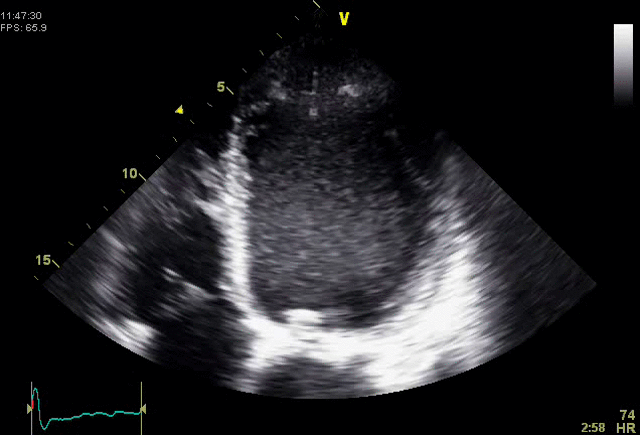Understanding Cardiac Screening
Figure 1
The aim of screening is to determine who and when a person is at risk of a heart attack. Hence, first understanding how heart attacks work is paramount.
A common misconception is that the artery will gradually narrow over time prior to a heart attack and there is a "window of opportunity" to screen for a blockage which is progressively getting worse.
However, while the blockage in STABLE ischemic heart disease due to a cholesterol plaque will gradually build up over time, the blockage in UNSTABLE ischemic heart disease is due to a blood clot (thrombus) which forms suddenly over a non-occlusive plague (see Figure 1); causing a "heart attack".
How do we know that it is a blood clot that caused the heart attack ? The evidence comes from direct observation from post-mortem examination as well examination of the clots we aspirate from the arteries during a heart attack (Figure 2). The second piece of evidence comes from the effectiveness of the blood thinners and clot-busting drugs that we use to treat heart attacks. However, a pre-requisite for the clot to form is almost always a cholesterol plaque within the heart artery. We do encounter other forms of blockages from external clots or from spasm of the heart artery, but these cases are in the minority.
Figure 2
Figure 3
The link between blood levels of Low Density Lipoprotein (LDL) and the risk of death or heart attacks is very strong and has been proven in all large and well conducted studies. Lowering LDL levels using diet, exercise, statins and other types of medications have all been proven to reduce the risk of future heart attacks and strokes.
The only "controversy" is only in the degree of reduction of LDL that comes with a reduction in dietary fat and the role of various forms of dietary fat. However, the benefits of reduction of dietary fat can be negated by replacing dietary fat with excessive caloric intake of sugar and carbohydrates (e.g. white rice / bread / noodles).
The latest PCSK9 antibody studies point strongly towards the fact that it is the reduction in LDL and not how one achieves it; that has the most effect on the reduction of the risk of future heart attacks.
Understanding Heart Attacks
Major modifiable risk factors for the formation of cholesterol plaques and heart attacks include diabetes, obesity, smoking, hypertension and a sedentary lifestyle.
Non-modifiable risks include age and male gender. These risks add up together, although by far the most harmful yet easily modifiable risk is smoking.

How Screening Works for Asymptomatic Patients
Screening picks up modifiable risks such as high lipid levels; diabetes and hypertension. There are open-source online Risk Calculators such as the British QRISK2 score (accessible via the ClinRisk icon), or the American risk calculator (accessible via the American Heart Association American College of Cardiology logo). This works out your risk of a heart attack over the next 10 years.
Singapore's Ministry of Health also has a local risk calculator (accessible via the Ministry of Health icon). However, the calculation has to be performed manually.
A risk of more than 10% over 10 years is considered by most to be significant. (some guidelines use a lower number) however, this does not mean that one has a blockage which needs to be opened up, but rather that intervention to reduce the risk may be appropriate. The final decision to start or stop medications should be made after a complete assessment by a doctor.
Screening picks out patients at high risk so that any treatment will have a significant long term absolute benefit to the patient or in mathematical parlance - a favourable risk / benefit ratio.
How Screening Works for Symptomatic Patients
Screening in patients with symptoms are for quite a different reason altogether, It is to elucidate
1. the cause of the symptoms
2. if the cause is benign or harmful
3. what treatment, if any, is indicated
Heart symptoms may include
1. Breathlessness on exertion or at rest
2. Palpitations
3. Chest pain / tightness
4. Fainting spells
Some advanced imaging methods are able to pick out high risk features on cholesterol plaques such as the CT images shown on the right (Figure 4). The patient shown in Figure 4 should start aggressive lipid lowering strategy as well as assessment for evidence of ischemia or inadequate blood supply.
Each patient may require a different form of assessment depending on their symptoms and following assessment by an expert. There is no perfect test and each test will have their own strengths and pitfalls.
Symptoms may be due to inadequate blood supply to the heart (ischemic heart disease); irregular heart rhythm (brady or tachy arrhythmias); impaired heart function (heart failure); heart valve dysfunction (valve stenosis or regurgitation) and others. Often several tests may be required to diagnose as well as to optimise treatment for complex conditions.
Figure 5
Echocardiogram of a patient with shortness of breath due to severely reduced heart function.Patient also has had a heart valve surgery in the past.

Figure 4







